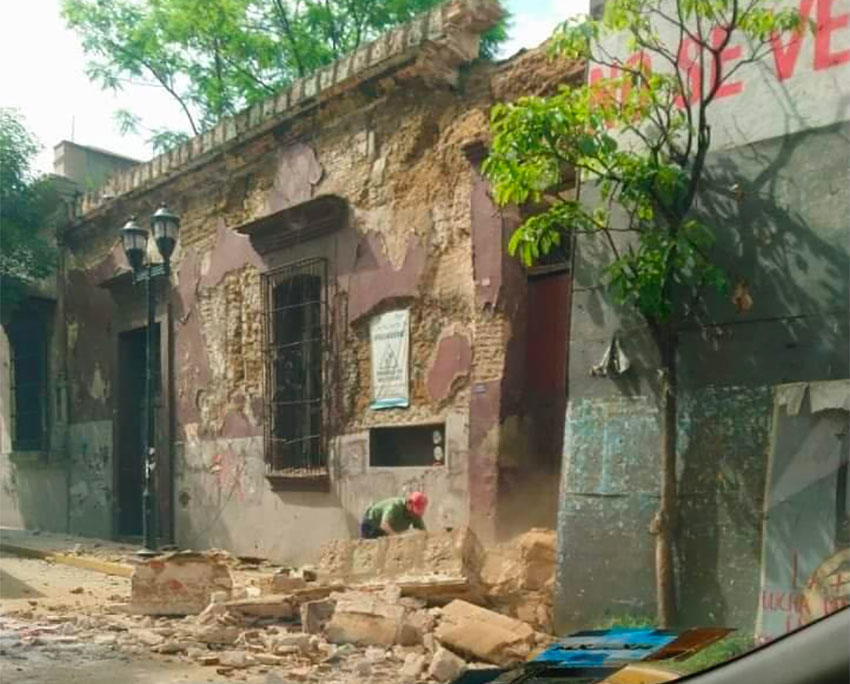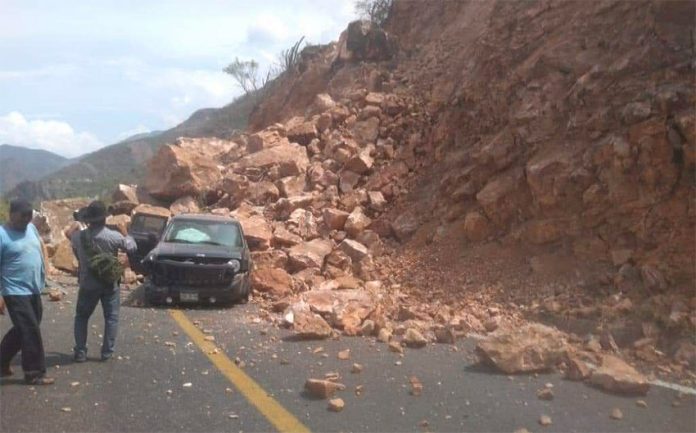At least four people were killed and more than 30 others were injured in a 7.5-magnitude earthquake that rocked southern and central Mexico on Tuesday morning, authorities said.
Authorities in Oaxaca, the southern state where the quake’s epicenter was located, also said that at least seven hospitals sustained damage, homes collapsed and landslides sent rocks tumbling onto highways.
They said that a 22-year-old woman in La Crucecita, a town in the tourist destination of Huatulco located 23 kilometers north of the earthquake epicenter, and another person in the same area were killed by walls that collapsed in the quake.
A man died in San Juan Ozolotepec, a municipality in Oaxaca’s Sierra Sur region, as a result of the quake but the exact cause of his death was unclear. Civil Protection authorities also said that a Pemex worker died from burns after the earthquake triggered an explosion at the oil refinery in Salina Cruz.
They also said that more than 30 people had been injured in different parts of the state.

General hospitals in Pochutla, Puerto Escondido and Pinotepa Nacional were damaged in the quake as were community hospitals in Santa Catarina Juquila, Santa María Huatulco, Río Grande and Santos Reyes Nopala.
An IMSS health clinic in the community of Los Naranjos de la Costa also reported structural damage after the temblor that struck at 10:29 a.m.
The newspaper El Universal reported that military personnel were traveling to San Juan Ozolotepec, located north of the quake epicenter, where there were reports of collapsed homes.
Highway authorities reported that a landslide caused a blockage on the highway between Oaxaca City and the Isthmus of Tehuantepec on the Totolapan-El Camarón section. They also said that federal highway 200 was impassable in the Pochutla-Huatulco area.
The earthquake also sent rocks tumbling onto a road in San Juan Ozolotepec, injuring two people.
The temblor was felt in at least six states and triggered the earthquake alarm in Mexico City, where people rushed out of their homes to seek safety.
It also triggered a small tsunami on the coast of Oaxaca but it didn’t pose a threat to human life. The National Seismological Service (SSN) said that the sea level rose 60 centimeters in Huatulco, which currently has few tourists due to the coronavirus pandemic.
The earthquake also rocked Juchitán, an Isthmus of Tehunatepec town that was devastated by an 8.2-magnitude temblor in September 2017.
Miguel Candelaria, a 30-year-old resident, said that he rushed into the street with his family when the quake struck but they had to stop in the middle of the street because the pavement was buckling.
“We couldn’t walk … the street was like chewing gum,” Candelaria told the news agency Reuters.
In Mexico City, where hundreds of people were killed in a second powerful earthquake in September 2017, helicopters flew low overhead to check for damage.
Mayor Claudia Shienbaum said on Twitter that only minor damage had been reported although videos posted to social media showed buildings and posts swaying violently.
The SSN said that there had been 303 aftershocks by 1:00 p.m. and that the largest of those had a magnitude of 4.6.
Source: El Universal (sp), Milenio (sp)
